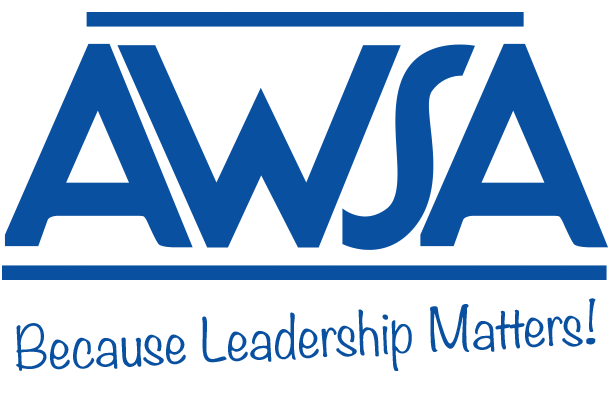October is National Principals’ Month: Is Your System Investing in Your Leadership ExcellenceBy Joe Schroeder, Ph.D., Associate Executive Director, AWSA Research indicates that effective principals significantly impact student achievement; teacher satisfaction and retention; student attendance; and reductions in exclusionary discipline. Principals who are viewed as effective leaders provide accurate feedback, foster trust, and boost teacher commitment and job satisfaction, leading to lower turnover rates. The Wallace Foundation recently published the findings of its systematic synthesis of two decades of research on how principals affect students and schools, with this striking conclusion: “An effective principal’s impact is stronger and broader than previously thought, making it difficult to envision a higher return on investment in K-12 education than the cultivation of high-quality school leadership” (Grissom, Egalite, and Lindsay 2021). Over the last decade, AWSA has developed professional learning and coaching support designed to support excellence in school leadership. We complement our conferences with in-depth academies and coaching support that provide ongoing and in-depth experiences that impact leadership practice. It has become clear that leaders investing in these deep-dive learning experiences are seeing the payoff in student outcomes. AWSA’s academy and coaching offerings serve individual leaders, while others focus on teams. This article explores examples of both types to demonstrate the return on investment for schools and districts. Team-Centered Academies The SAIL Academy is AWSA’s most prominent team-centered offering and to date has helped nearly one hundred school districts and several hundred school-level or district-level teams across Wisconsin build focus and coherence of their improvement agendas through related short-term cycles of intentional action aimed upon significant adult practice shifts and student achievement gains. And these aims are increasingly being realized. For example, see these two examples from the School District of Elmbrook, which recently completed a two-year, system-wide participation in SAIL:
Elmbrook Superintendent Mark Hansen acknowledged similar recent academic progress across schools in the system when he stated, ”We have been doing school improvement for decades and getting good results, but the short-cycle improvements that are hardwired into the SAIL process proved to be a game changer for us, resulting in breakthrough performance for our students. SAIL has proven to help us help kids have their dreams come true.” The School District of Janesville made a similar system-wide commitment to the SAIL Academy for support of their schools and school leaders and with similarly noteworthy impact.
Harrison’s principal, Jessica Grandt-Turke, made these reflections in June regarding the impressive student learning gains and her own experiences in 2023-24: “This was the best year that I have had from an instructional leadership standpoint in my 13 years at Harrison. Several things contributed to this. First, the foundation that was established at SAIL last June that then carried through the 23-24 school year was helpful. We came into the school year with our plan ready to go and then had time to revisit it throughout the year. Another factor was the tight focus from the district level allowed me to then have a tight focus at the school level rather than the ‘whack a mole’ style that we have been playing for the last decade, where we are trying to focus on too many things at once.” Career Stage or High Leverage Practice Academies for School Leaders AWSA’s leader-centered offerings cluster either in career-stage academies (from stages of aspiring to launching to building to mastering) or in prominent “pillars” of administrative work (e.g., Leading Professional Learning Communities, Impactful Coaching, and the Climate Catalyst Academy). One critical career-based option is the Building Academy, as its central focus is to help administrators who are often early in their administrative careers and therefore often functioning as school managers build the skills necessary to go deeper – becoming impactful learning leaders who can positively impact student learning. As is common across our offerings, the Building Academy embeds multi-session learning into short, ongoing cycles of action planning and progress monitoring; sets sessions within a network of peers; and provides aligned coaching support around self-selected problems of local adult practice. In July, Dr. Martin Castro, principal at Swanson Elementary School in Brookfield and a previous participant in several AWSA academies, published his dissertation that explored how principals perceive the influence of the Building Academy on their self-efficacy (Bandura, 1977), where self-efficacy is defined as one’s belief in one’s ability to succeed in a specific situation or accomplish a specific task. Castro found through his study a strong development of Building Academy participants in their perceived self-efficacy to be more impactful leaders. Notably, his research revealed that the Building Academy effectively incorporated all four sources of self-efficacy – mastery experiences, vicarious experiences, verbal persuasion, and physiological and emotional states – into its teaching methods, providing participants with multiple channels to reinforce their self-belief. Moreover, he was able to identify that some of the most prominent growth occurred in five specific leadership attributes: self-management, growth mindset, capacity building, influence, and continuous improvement. It’s no surprise then that, year after year, typically 100% of the Building Academy participants surveyed share that they would recommend this Academy to an administrator interested in becoming a more impactful learning leader. Dr. Castro’s analysis demonstrated the why behind the growth in student outcomes that leaders are regularly experiencing after completing our academies. Investing for Impact In AWSA’s 2022 Professional Concerns Survey, 65% of Wisconsin’s administrators who participated shared their belief that the job of a principal has become too complex, while 90% confided that they feel great stress at least once a week. Relevant to this article, 72% of the same respondents stated that stronger professional learning would serve to reduce the complexity of the work. During National Principals’ Month, could there be any better time for system leaders to provide you the support you need to continue to show up, lead, and serve well? Ensuring that you are supported in belonging to and engaging in AWSA’s in-depth professional learning is a critical investment in improved student outcomes. |
